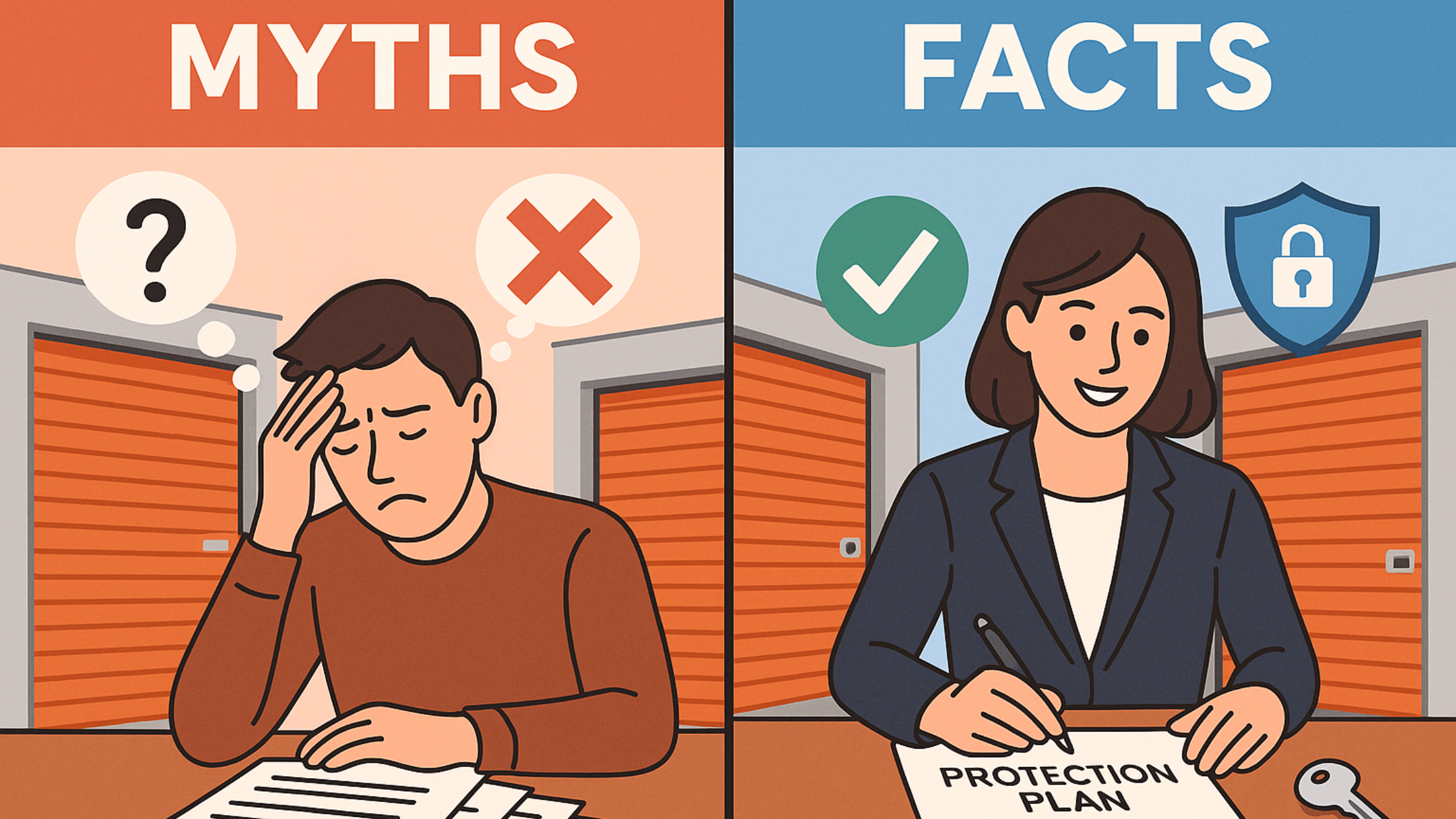According to Storage Cafe one in three Americans are currently renting self storage space. That means one-third of U.S. households are comfortable that their possessions are well-protected in their local self storage facility. Most of these facilities have cutting-edge security, including video monitoring, electronic gates, and keypad access. As an added level of protection and convenience, many of today’s self storage businesses feature keyless entry.
Despite high-level security, most self storage facilities require insurance to cover losses. To mitigate the risk of loss, a growing number of self storage businesses have added optional tenant protection plans. A tenant protection plan, like Storage Shield, provides the added security of covering certain losses not covered by insurance.
If you’ve been in the self storage industry for a while, you’ve likely heard about tenant protection plans, but you may also have some doubts. To put it simply, a tenant protection plan is an agreement between you (the operator) and your tenant. These plans provide coverage for stored belongings in case of unexpected events like theft, fire, water damage, or natural disasters.
Unlike insurance, which involves an outside carrier, a tenant protection plan is administered directly through your facility. It’s a more straightforward, accessible option for both you and your tenants.

Tenant Protection Plan Misconceptions
Regardless of the growing popularity of these plans, plenty of myths and misunderstandings still circulate. Let’s cut through the noise and uncover the truth behind the most common misconceptions.
Misconception #1: “Tenant protection plans are the same as insurance.”
They’re not. Insurance is underwritten by a licensed carrier, while a protection plan is a contractual agreement you provide at the facility level. This distinction makes protection plans simpler to manage. You’ll have fewer regulations and faster resolutions for tenants.
Misconception #2: “Offering protection plans is complicated.”
In reality, implementing tenant protection is straightforward. Most providers give you turnkey tools, training, and support, so you can roll it out with minimal disruption. Once in place, it becomes part of your standard leasing process.
Misconception #3: “My tenants already have homeowners or renters insurance.”
Tenants who depend on the “off-premises” coverage of their homeowners or renters insurance, may be disappointed in the event of loss. Off-premises coverage is usually capped at a certain rate and carries high deductibles. Tenant protection fills those gaps, giving your renters peace of mind and a complete solution.
Misconception #4: “Tenants don’t really care about protection.”
People’s possessions matter to them. Furniture, business inventory, or their child’s first stuffie are irreplaceable to them. Presenting a protection plan demonstrates that you care about their belongings, which boosts trust and loyalty.
Misconception #5: “Protection plans don’t benefit operators.”
They absolutely do. In addition to creating an extra revenue stream, tenant protection reduces liability. Offering and encouraging a tenant protection plan lowers the risk of disputes if damage occurs.
Misconception #6: “It’s too hard to explain protection to tenants.”
That’s where clear communication and training come in. Storage Shield supplies brochures, FAQs, and scripts that make it easy for your team to educate renters. Once staff get comfortable, it becomes second nature.
Misconception #7: “Protection plans cover everything under the sun.”
They don’t, and that’s a good thing. Like any product, they have defined limits and exclusions. Being upfront about what’s covered and what’s not builds trust and avoids unrealistic expectations.
Misconception #8: “Tenants will resist paying extra for protection.”
Most tenants appreciate the extra coverage, especially if you present it as part of their overall rental package. Think of it like adding collision coverage when renting a car. Tenants understand the risk and often like having the option.
Misconception #9: “Only large storage operators can offer protection.”
Whether you own one facility or twenty, tenant protection programs scale to your needs. Many providers specialize in helping independent operators compete with REITS by offering the same services.
Misconception #10: “Protection plans don’t make a real difference.”
Not only do they shield your tenants from financial loss, but they also protect your business reputation. When something goes wrong, a smooth claims process turns a potential conflict into an opportunity to prove you care about your tenants.
Why Tenant Protection Matters More Than Ever
Today’s self-storage customers expect transparency, value, and security. Tenant protection plans check all those boxes. For tenants, these plans prove peace of mind. For operators, they provide additional revenue, reduced risk, and a competitive advantage.
By addressing these misconceptions head-on, you position yourself as a trustworthy, customer-first operator. When your tenants know you’ve taken steps to safeguard their belongings, they become loyal customers and your best advertisers.
